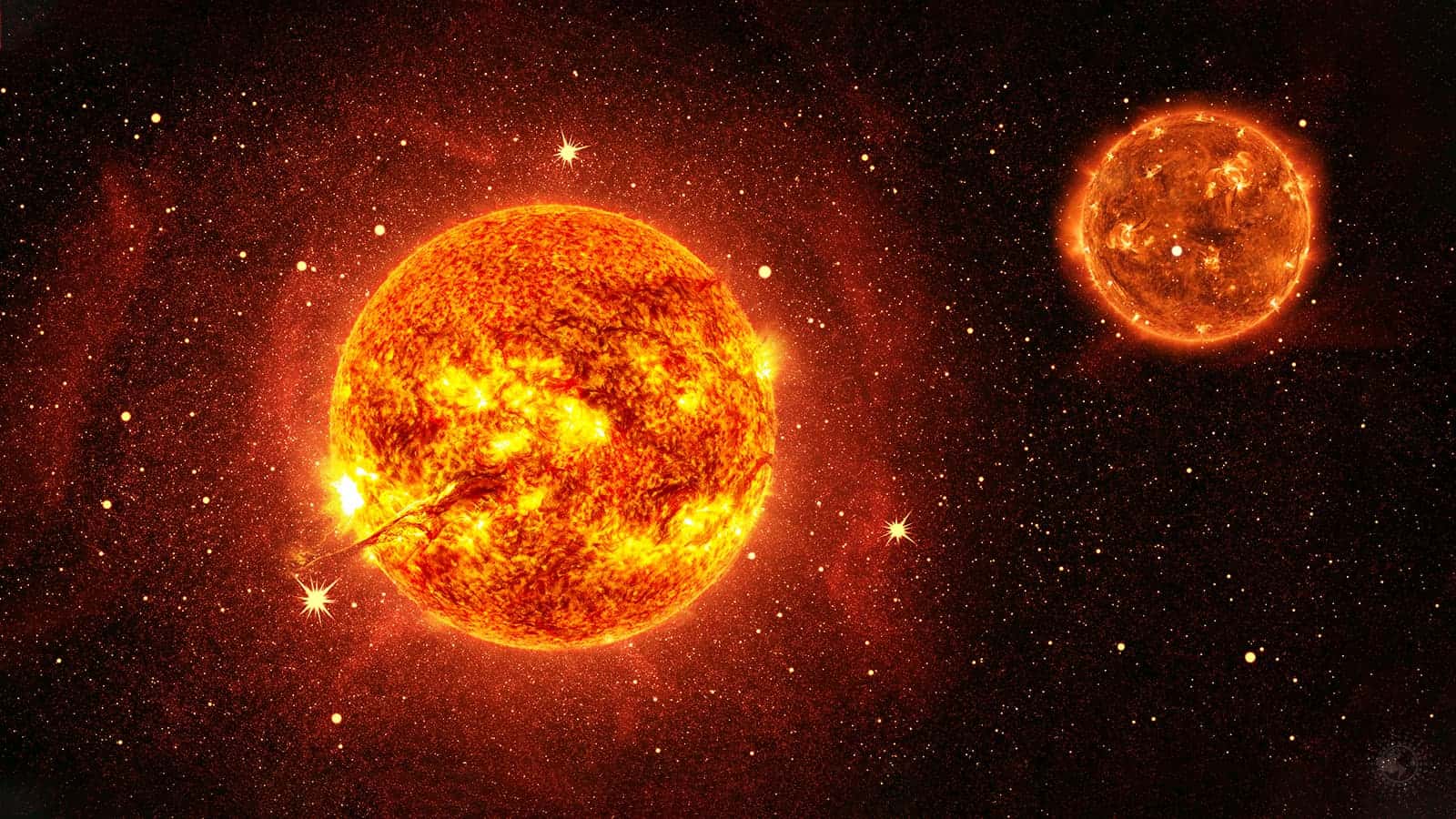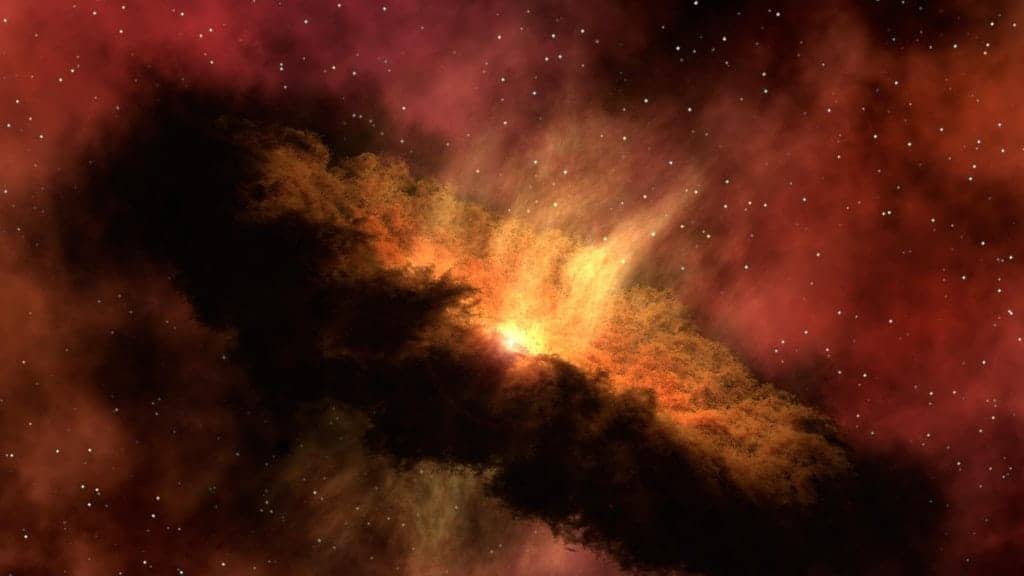The study of astronomy reveals new information all the time, and recently, scientists have discovered that a second sun may have once existed. Astronomers stumbled upon this second sun theory when attempting to uncover the mystery of how the solar system formed. In the most distant regions of the solar system, scientists have observed a ton of debris floating around. This phenomenon exists beyond the realm of the gases that formed the planets. So it does not match with current models of how the solar system came into being.
Therefore, they’ve come up with the theory that perhaps a second sun existed at one point in time. They posit that the stars spent time collecting some of the debris floating in outer space. Eventually, they pushed the rest into an area past all the gases and dust.
We can’t see this second sun. Scientists believe that if it did exist, it moved away from its orbit with our sun billions of years ago. Studies of astronomy indicate that the two suns would have circled the Milky Way over a dozen times since then. After the second sun broke away, it may have ended up in a different area of outer space. However, the Oort cloud – a hollow sphere of debris that includes space rocks and comets in the outer section of the sun’s orbit – could hold clues about this mysterious sun twin.
Astronomers explain the “Oort cloud”
The planets and asteroids in the inner solar system lie on a single flat disk around the sun. However, the Oort cloud forms a giant sphere of debris that surrounds the solar system. Also, while gravity strongly influences the inner planets, the rocks and other debris in the Oort cloud don’t experience much of the sun’s gravity. All of these objects could quite easily drift farther out into space because of this. Scientists have found that the most distant objects in the Oort cloud are 100,000 times farther away from the sun than Earth.
Study co-author Dr. Avi Loeb, a Harvard astrophysicist, said that this distance measures halfway to the nearest star, Alpha Centauri. He went on to say that if this star and all the others have Oort clouds, then they’re all connected, and space is full of them.
While our Oort cloud doesn’t have as many large objects as the inner solar system, it still contains about 100 billion individual items. Most of them consist of rock and ice that sits in the cloud of debris. If you fly through it, you probably wouldn’t come across anything at all due to the size of the objects, Loeb said. We can’t see the debris with our own eyes. However, the evidence for them lies in the comets coming from the Oort cloud that move into the inner solar system quite frequently.
What’s inside the Oort cloud?
Some bigger objects also exist within the cloud, though not as many as the inner solar system. Scientists who have been studying the Oort cloud beyond Neptune have theorized that a planet may exist there, pulling the debris into a specific formation. Planet 9, as they call it, would weigh up to 10 times more than Earth, if it exists. However, Loeb said that in astronomy, this causes problems since the Oort cloud forms a sphere, unlike planets and asteroids that form from a flat disk of gas and dust.
Loeb questions how the Oort cloud came to exist in the first place. In astronomy, many scientists believe that the debris is scattered from the disk of gaseous materials that formed the planets. Our Oort cloud makes up the vastest part of our solar system. And, it extends far beyond the customary reach of asteroids and planets. Billions of comets exist within this cloud of debris.
While some objects in the cloud came from the inner solar system, the large items in this dense area account for only about 1/50th of the total amount of large objects beyond Neptune. This issue stumps researchers. That’s because simulations of the Oort cloud formation show that it should have around one-third and one-tenth of the number of large objects coming from the inner solar system. If a big planet exists somewhere beyond Neptune, the mystery deepens even further. This disparity wouldn’t explain a large amount of Oort cloud objects, Loeb said.
Astronomers explain where the ‘second sun’ comes into play
Along with colleague Amir Siraj, a Harvard undergraduate, Loeb suggests that the sun may have worked with the second sun long ago to capture objects passing by in space. In astronomy, it’s already well-accepted that the sun and other stars formed from dust and gas. Most likely, they came from the same small cluster. In this galactic soup were comets and even planets. But with the sun’s gravity alone, it wouldn’t have been able to pull so many objects into the Oort orbits. However, if a second sun existed and orbited around ours, this may explain why so many objects exist in the Oort cloud.
Suppose the two suns were around the same size and orbited one another at 1,000 times the distance between the sun and Earth. That distance equals 1.5% of a light-year. Their conjoined gravity could have taken pieces of rock and ice from inner space. As the sun and its twin drifted further apart, each would be encircled by Oort clouds with a much greater density than what the stars could’ve captured on their own. Scientists believe that a third massive star likely broke up the orbit of the two suns.
Loeb says this theory would explain the number of objects within the Oort cloud. Also, it would define the shape of the cloud. If the suns captured objects randomly from deep space, they would’ve formed spheres around the sun and not disks, as planets and asteroids are constructed from. So if Loeb and Siraj’s theory holds true, astronomers have probably grossly underestimated how many large objects the Oort cloud is hiding. If a second sun existed at one point, both suns should’ve picked up the possible Planet 9 from a cluster of objects as well as other dwarf planets.
The LSST scan
Of course, right now, they have no evidence of the existence of these planets. But Loeb says they can test their theory in the near future. When the Large Synoptic Survey Telescope (LSST) completes its scan of space in Chile in 2021, astronomers will have a much clearer idea of what objects exist within the Oort cloud. Right now, it’s shrouded in mystery. That’s simply because of the distance of it from Earth and the difficulty in collecting data.
LSST’s first detailed look into space could find that Planet 9 and other dwarf planets exist in the Oort cloud. This data will provide further credibility into the ‘second sun theory,’ Loeb said. However, he went on to lament that they would never find this twin sun again if it ever did exist. The sun moved away from its original cluster in space 4.5 billion years ago. Since then, the Milky Way has undergone a plethora of changes. Therefore, the other sun could be anywhere by now, if it exists any more at all.
It probably would’ve looked like a very bright planet moving slowly across the sky, still pretty distant from our sun. But it sat close enough to affect the gravitational pull of objects in the Oort cloud.
“Previous models have had difficulty producing the expected ratio between scattered disk objects and outer Oort cloud objects. The binary capture model offers significant improvement and refinement, which is seemingly obvious in retrospect: most Sun-like stars are born with binary companions,” said lead study author and astronomer Amir Siraj in a statement.
The existence of a second sun could explain facts about life on Earth. It could answer questions about the formation of our solar system, as well.
“Objects in the outer Oort Cloud may have played important roles in Earth’s history, such as possibly delivering water to Earth and causing the extinction of the dinosaurs. Understanding their origins is important.” ~Amir Siraj, Astronomer
 Final thoughts on how astronomers believe a second sun may have existed at one time
Final thoughts on how astronomers believe a second sun may have existed at one time
If the sun had a companion at one time, it would explain why the Oort cloud contains so many large objects. It would also explain why it’s shaped like a sphere rather than flat disk-like other planets and asteroids. Astronomy always unearths new information about how the universe works and what may exist out there beyond our solar system. If researchers find evidence of a Planet 9 and other dwarf planets, this means a second sun likely existed.
“The puzzle is not only regarding the Oort clouds, but also extreme trans-Neptunian objects, like the potential Planet Nine,” said Loeb. “It is unclear where they came from, and our new model predicts that there should be more objects with a similar orbital orientation to Planet Nine.”
The second sun theory was published on August 18. 2020 in The Astrophysical Journal Letters by physicists and astronomers from Harvard University.


















